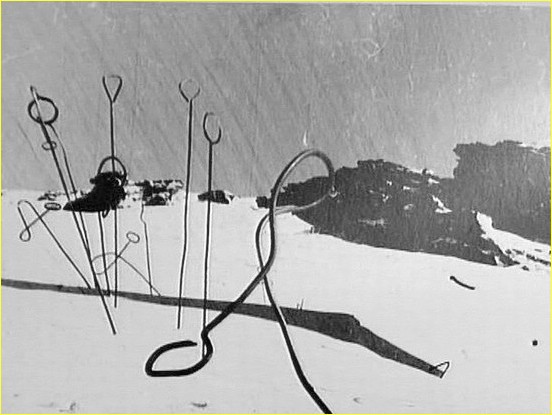
It was the year 1959, in the early days of February. A group of Soviet ski hikers from Ural Polytechnical Institute went off on an excursion to trek the Ural Mountains. The group consisted of ten people, eight men and two women, all ranging from 21 to 24, with the exception of a 38-year-old sports instructor. The group was led by 23-year-old Igor Dyatlov. All of the hikers were well experienced, this hike aiming for a Grade III certification, which was the highest level of difficulty and achievement for non-alpine, long-distance treks. To qualify, an expedition needed to be a minimum total distance of 300 kilometers (roughly 190 miles) and be a duration of 16 days or more, and the group had to endure the natural climates and terrain of the mountains. This was the highest grade at the time, and the Dyatlov group was determined to earn this.
The group received approval of their route on January 23 of that year, thus starting their embarkation up the Ural Mountains. Everything was going as planned until January 28, when one of the hikers, Yuri Yudan, began to feel unrelenting pain in his knee, causing him to have to return back to the bottom as the other nine pushed on. Yuri descended safely, making it back to civilization; however, things became worrisome when communications with the remaining hikers ceased. They did not telegram during their scheduled time. A rescue team was sent out on February 20. Six days went by when their tents were finally found, but the scene depicted tragedy. What was found was the tent that appeared to be cut open, clothes strewn about, and multiple sets of footprints in the snow, eight to nine to be exact.
Over the next day or two, five bodies were found at varying distances from the tent. The last four bodies were not found until May of that year, after 40-60 feet (4-6 m) of snow had thawed. The condition everything was left in was eyebrow-raising, to say the least. Many of the hikers' clothes were left in the tent that had been slashed open. Additionally, the tent was slashed from the inside. This led researchers to believe something urgent had urged all of them out of the tent, so much so that they neglected their warmer clothes. Six of the nine hikers were reported to have died from hypothermia, while three others showed signs of severe physical trauma—chest fractures and skull injuries. The fractures were so severe that they were deemed comparable to a car crash. Some were found with soft tissue, such as eyes, lips, and even their tongues, missing. It was even reported that unusual levels of radiation were found on the undergarments the hikers were found in, not enough to cause serious health effects, but much more than what is usually found above ground. Additionally, there were reports of unidentifiable “fireballs” in the sky by civilians during this time, along with a picture allegedly taken by one of the hikers that appears to be a strange light in the sky. When the case was coming to a close and it was time for the funerals, many found it suspicious how Soviet authorities wanted to keep the memorials limited in attendees, have a closed casket funeral despite conflicting wishes from the parents, and limit press reporting.
There are many theories as to what happened, some ranging from more likely to supernatural. These theories range from an avalanche mixed with dangerous winds, infrasound, military weapons testing, homicide, an animal attack, and paranormal/“supernatural” explanations. A mix of bad weather and natural disasters seems the most obvious, but what does not align with this is the injuries of blunt force trauma with no external injuries. Plus, the group was highly skilled, so the avalanche must have happened all at once in order to panic the whole group. There is a theory that infrasound played a part. Infrasound is a very low-frequency sound that can cause panic and disorientation, and can be caused by winds blowing over ridges. This could explain why the hikers left their tents in such a rush; however, there is no evidence that one had occurred during this time, and it is unlikely to cause such mass hysteria among all the hikers. There is another theory that Russia was conducting a weapons test, which connects to the sightings of the bright lights, the hikers’ panic, and the radiation found on their clothing. Russia does conduct tests in the Ural Mountains area, but there is no tangible proof that this occurred while the hikers were climbing. The next theory is homicide. The group was in remote territory near lands used by the Mansi people and by hunters. Others even theorized tensions within the group arose, but evidence from their journals showed no conflict between any of them. Plus, none of the injuries match those of a brawl. Animal attacks were also considered, but the injuries did not align with this theory, along with the absence of any animal tracks. Lastly, other theories involving UFOs, aliens, and the abominable snowman have circulated, but none of these have any sort of backing whatsoever. So, what really happened? That remains a mystery to this day, with the case being ruled as deaths by a “compelling natural force” by authorities.
If you are interested in the Photos recovered from the hikers' cameras.
Movie:
Longer breakdown:
Shorter breakdown: